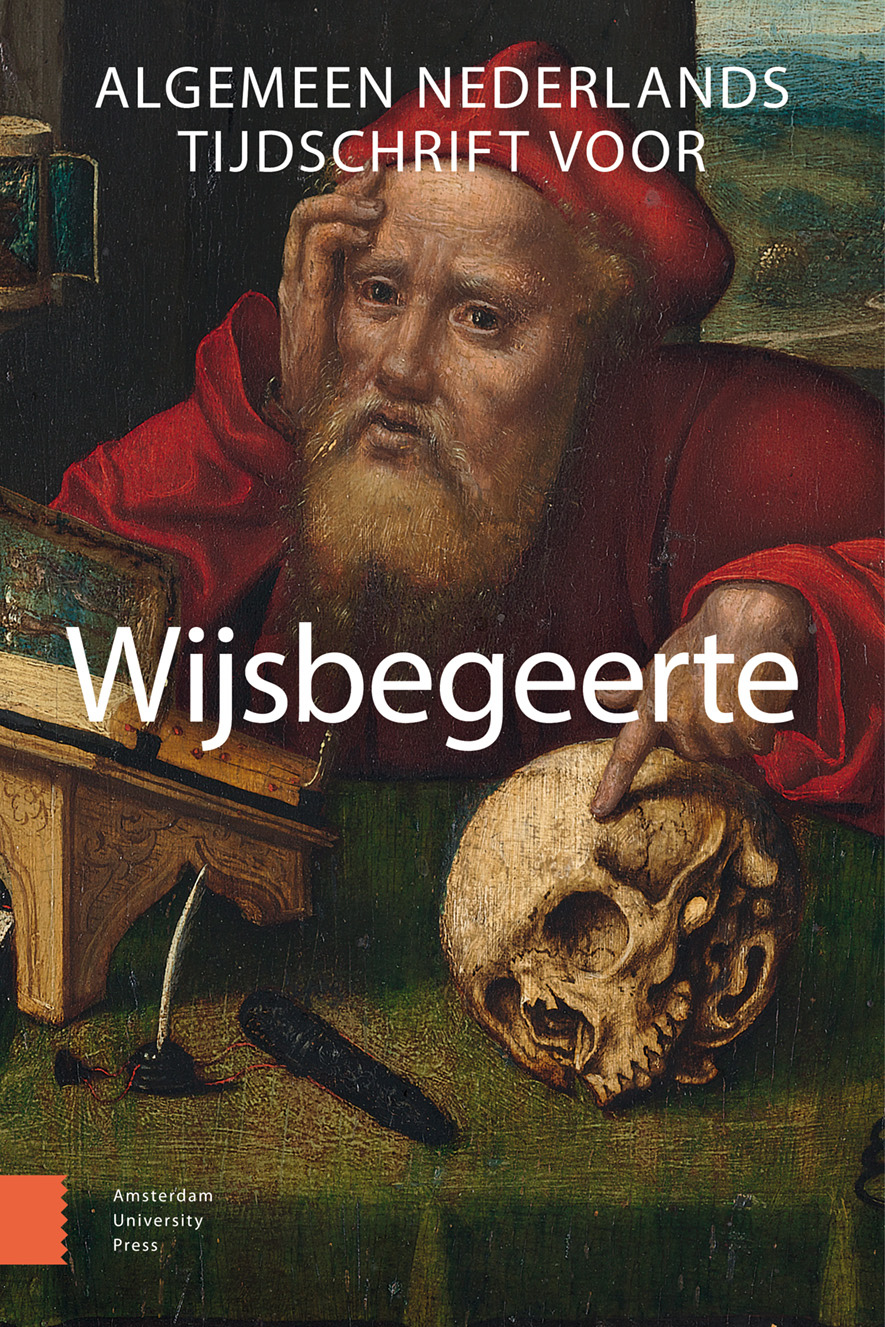- Home
- A-Z Publications
- Algemeen Nederlands Tijdschrift voor Wijsbegeerte
- Previous Issues
- Volume 115, Issue 4, 2023
Algemeen Nederlands Tijdschrift voor Wijsbegeerte - Volume 115, Issue 4, 2023
Volume 115, Issue 4, 2023
Kunst
- Redactioneel
-
- Artikelen
-
-
-
Martens vs. KIRAC: les extrêmes se touchent?
More LessAbstract Martens vs. KIRAC: les extrêmes se touchent? This paper discusses the relationship between art and politics by taking Walter Benjamin’s famous formulation on the ‘politicization of art’ and the ‘aestheticization of politics’ as a starting point. The work of Dutch artist Renzo Martens and the work of art collective KIRAC are considered to be exemplifying the two sides of Benjamin’s formulation, and Read More
-
-
-
-
Schopenhauers pessimisme, de esthetische contemplatie en de waarde van de kunst
More LessAbstract Schopenhauer’s pessimism, aesthetic contemplation and the value of art According to Schopenhauer, the aesthetic contemplation of art temporarily offers some kind of redemption: art is valuable because of its liberating effect on the spectator’s will, i.e. his or her urges, strivings and desires. He also acknowledges that works of art have cognitive value, since they offer insight into timeless Platonic Ideas. I argue that Sc Read More
-
-
-
De immersieve kunstervaring: schone schijn of emancipatie?
More LessAbstract The Immersive Experience of Art: Deception or Emancipation? The immersive experience plays an increasingly important role in the contemporary experience of art. Digital and multimedia technologies are used to make works of art accessible to a broad and diverse audience. In popular discourse, this evolution is often framed in a narrative of democratization and social emancipation through the participation in a Read More
-
-
-
Esthiek: Kunst en morele afstemming
More LessAbstract Aesthics: Art and moral attuning. Art can help us understand everyday moral deliberation. Better perhaps than ethics. People don’t just act randomly in moral situations nor do they argue internally about which ethical principle to follow before deciding what to do. We built our moral sensitivity whilst living our lives, adhering to aesthetic norms of interaction. Regular engagement with works of art educates our moral sensitivity.
-
-
-
Seksisme en realisme: een lezing van Émile Zola’s Het meesterwerk
More LessBy Ruud WeltenAbstract Genderism and Realism. A Reading of Émile Zola’s The Masterpiece Does sexual morality play a role in our perception of reality? This contribution explores the rise of modernity as a radical change of perception. This is done by reading an 1886 novel on painting, Émile Zola’s L’Oeuvre (The Masterpiece). The Masterpiece is a novel that meticulously explores the relationship between reality and representation i Read More
-
-
-
Escapisme als kunstpolitiek: de propaganda van Black Panther (2018)
More LessAbstract Escapism as artistic politics: propaganda in Black Panther (2018) Escapism is omnipresent in contemporary mass art, even though it has a bad reputation. This article traces that reputation back to a pragmatist conviction that art should give expression to experiences, and morals, from everyday practical life. Through a philosophical conversation with two pragmatist aestheticians, W.E.B. Du Bois and Paul C. Taylor, and a Read More
-
-
-
De tijd van kunst: Negri en Virno over kairòs, taal, en creatie
More LessAbstract The time of art: Negri and Virno on kairòs, language, and creation. Negri and Virno aim to establish a concept of art that demonstrates a difference within a contemporary society that they see as completely dominated by the market. A time regime presenting the spheres of work and non-work as separate, structures human life. Yet in fact, work today stretches beyond the borders of both spheres. Labor power consists Read More
-
-
-
Afgunst, jaloezie en begeerte
More LessAbstract Envy, jealousy, and covetousness Envy, jealousy, and covetousness are three similar phenomena that people commonly refer to by using one word: ‘jealousy’. Can they be distinguished, and if so, how? More specifically, in which way(s) is envy different from jealousy proper and covetousness? In this article I argue that these three phenomena are intimately related because they all exhibit a ‘triangular’ structure: Read More
-
- Recensie
-
Most Read This Month
Article
content/journals/00025275
Journal
10
5
false
en

Most Cited Most Cited RSS feed
-
-
oa Propriospect
-
- More Less

